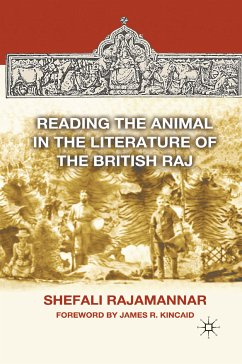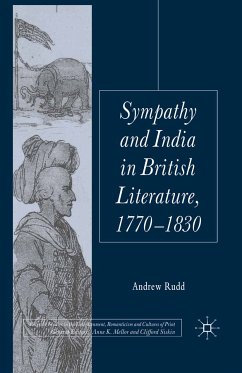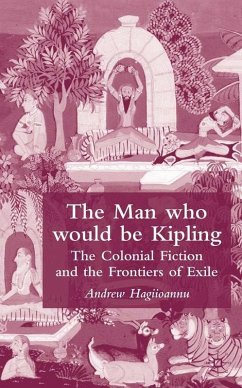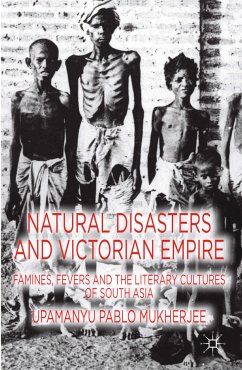Dieser Download kann aus rechtlichen Gründen nur mit Rechnungsadresse in A, B, BG, CY, CZ, D, DK, EW, E, FIN, F, GR, HR, H, IRL, I, LT, L, LR, M, NL, PL, P, R, S, SLO, SK ausgeliefert werden.
'Postcolonial studies have been vitally concerned with the constitution of human hierarchies of race and domination. Few, however, have paused to ask how those hierarchies extend to the hierarchization of species. What is the role of the animals so ubiquitous in imperial representations of the colony? Shefali Rajamannar answers this question with subtlety and telling archival detail, capturing in sharp and illuminating readings the ambiguity as well as the orientalist function of animals in the representation of the Raj. For anyone who has ever experienced the ambivalent effect, at once oppressive and playful, of reading Kipling's Jungle Books, Rajamannar's study will be a revelation.' - David Lloyd, professor of English and Comparative Literature, University of Southern California.
'Energizes posthumanist literary and cultural criticism in a truly original and important way. It reminds us that the British Empire was a powerful - and often violent - attempt to shape the environment after its own vision. It was a vision, Rajamannar argues convincingly, where the respective ideologies of social and ecological domination crucially nourished each other with symbolic and material legitimacy.' - Saikat Majumdar, assistant professor of English, Stanford University.
'Maybe it's the times we live in, but who wouldn't want to read about tigers and elephants, howdahs and hookahs, princes and pukka-sahibs? I don't know of other books in any academic field - or jungle - that so persuasively invite us to look again at the increasingly exotic British men and women of this period. Reading the Animal in the Literature of the British Raj is a fascinating and beautifully written description of the work that representations of animals did for the British in the time of the Raj . . . The author makes excellent use of an impressive array of source materials to support her arguments. Her close readings of these narratives, photographs, and illustrations are exciting and original, and she provides just the right amount of historical and cultural context.' - Richard Tithecott, author of Of Men and Monsters: Jeffrey Dahmer and the Construction of the Serial Killer
'No book I know handles this task with more acuity and lucidity than ShefaliRajamannar's Reading the Animal in the Literature of the British Raj. Dr. Rajamannar keeps her focus keenly on her subject, the way the British Raj imagined and imposed itself by way of distinguishing itself from nature and the animal, and how that othering worked in parallel ways in matters of gender, age, class, and finally, in the outwardly confident (though not-so-secretly anxious) manufacturing of a dominant race. Too rich to summarize here, the argument builds patiently and with a beautifully unintrusive feel for the telling example, always presented quietly and serenely, even when the implications are disturbing, heartbreaking. Dr. Rajamannar knows how to use understatement, keep herself out of the way of her sophisticated and original argument. The book exists, as it were, on two levels: one offers a shattering and new view of the construction on power and oppression by way of the othering performed on class, race, gender, nationhood, and species in the Raj and the other is a deeply suggestive meditation on our humanness, how we locate it in a spectrum of relations and not as an isolated given, much less as a stable pinnacle of a pyramid: how can we see ourselves fluidly and relationally in ways that do not induce panic and slaughter and may, some day, allow even some play, some love.' - James Kincaid, Aerol Arnold Professor of English, University of Southern California.









